Konstantin Egorov
Gaze into the Heart: A Multi-View Video Dataset for rPPG and Health Biomarkers Estimation
Aug 25, 2025Abstract:Progress in remote PhotoPlethysmoGraphy (rPPG) is limited by the critical issues of existing publicly available datasets: small size, privacy concerns with facial videos, and lack of diversity in conditions. The paper introduces a novel comprehensive large-scale multi-view video dataset for rPPG and health biomarkers estimation. Our dataset comprises 3600 synchronized video recordings from 600 subjects, captured under varied conditions (resting and post-exercise) using multiple consumer-grade cameras at different angles. To enable multimodal analysis of physiological states, each recording is paired with a 100 Hz PPG signal and extended health metrics, such as electrocardiogram, arterial blood pressure, biomarkers, temperature, oxygen saturation, respiratory rate, and stress level. Using this data, we train an efficient rPPG model and compare its quality with existing approaches in cross-dataset scenarios. The public release of our dataset and model should significantly speed up the progress in the development of AI medical assistants.
GigaPevt: Multimodal Medical Assistant
Feb 26, 2024Abstract:Building an intelligent and efficient medical assistant is still a challenging AI problem. The major limitation comes from the data modality scarceness, which reduces comprehensive patient perception. This demo paper presents the GigaPevt, the first multimodal medical assistant that combines the dialog capabilities of large language models with specialized medical models. Such an approach shows immediate advantages in dialog quality and metric performance, with a 1.18\% accuracy improvement in the question-answering task.
Machine learning-based detection of cardiovascular disease using ECG signals: performance vs. complexity
Mar 10, 2023



Abstract:Cardiovascular disease remains a significant problem in modern society. Among non-invasive techniques, the electrocardiogram (ECG) is one of the most reliable methods for detecting abnormalities in cardiac activities. However, ECG interpretation requires expert knowledge and it is time-consuming. Developing a novel method to detect the disease early could prevent death and complication. The paper presents novel various approaches for classifying cardiac diseases from ECG recordings. The first approach suggests the Poincare representation of ECG signal and deep-learning-based image classifiers (ResNet50 and DenseNet121 were learned over Poincare diagrams), which showed decent performance in predicting AF (atrial fibrillation) but not other types of arrhythmia. XGBoost, a gradient-boosting model, showed an acceptable performance in long-term data but had a long inference time due to highly-consuming calculation within the pre-processing phase. Finally, the 1D convolutional model, specifically the 1D ResNet, showed the best results in both studied CinC 2017 and CinC 2020 datasets, reaching the F1 score of 85% and 71%, respectively, and that was superior to the first-ranking solution of each challenge. The paper also investigated efficiency metrics such as power consumption and equivalent CO2 emissions, with one-dimensional models like 1D CNN and 1D ResNet being the most energy efficient. Model interpretation analysis showed that the DenseNet detected AF using heart rate variability while the 1DResNet assessed AF pattern in raw ECG signals.
CoRSAI: A System for Robust Interpretation of CT Scans of COVID-19 Patients Using Deep Learning
May 25, 2021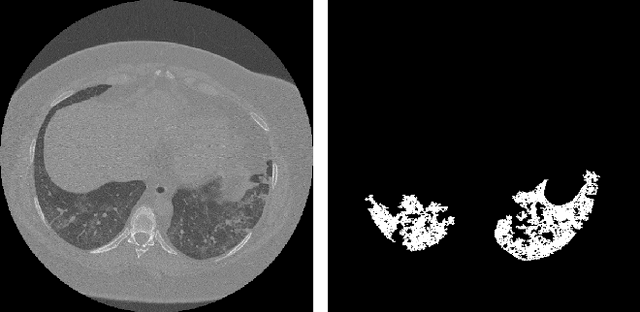

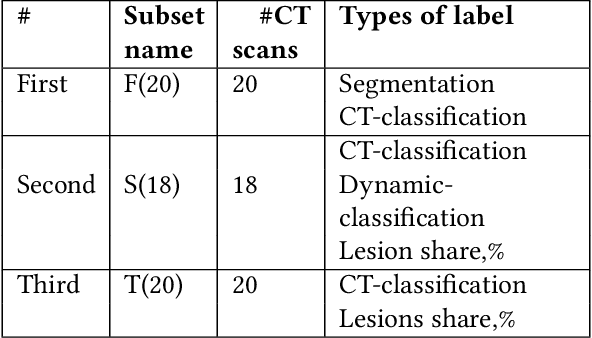

Abstract:Analysis of chest CT scans can be used in detecting parts of lungs that are affected by infectious diseases such as COVID-19.Determining the volume of lungs affected by lesions is essential for formulating treatment recommendations and prioritizingpatients by severity of the disease. In this paper we adopted an approach based on using an ensemble of deep convolutionalneural networks for segmentation of slices of lung CT scans. Using our models we are able to segment the lesions, evaluatepatients dynamics, estimate relative volume of lungs affected by lesions and evaluate the lung damage stage. Our modelswere trained on data from different medical centers. We compared predictions of our models with those of six experiencedradiologists and our segmentation model outperformed most of them. On the task of classification of disease severity, ourmodel outperformed all the radiologists.
Noise-Resilient Automatic Interpretation of Holter ECG Recordings
Nov 17, 2020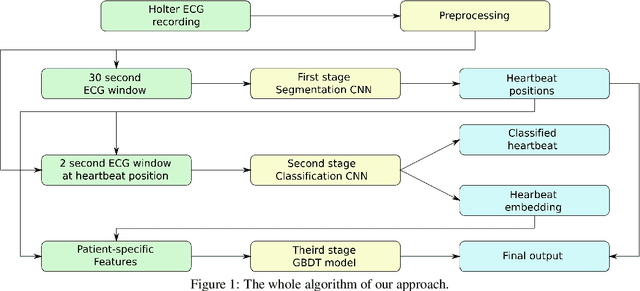
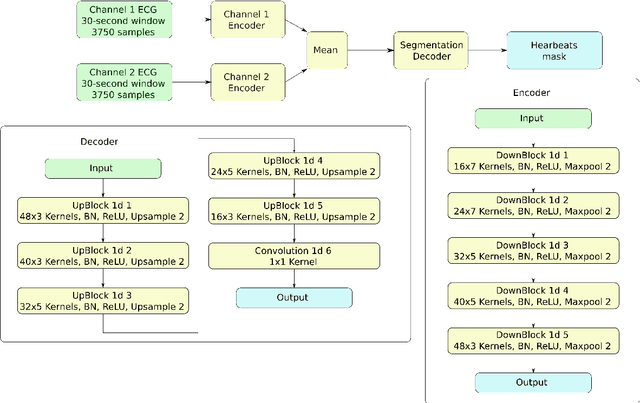
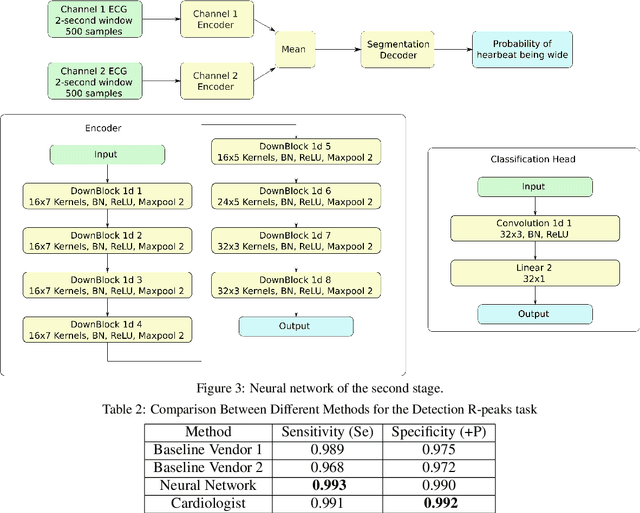
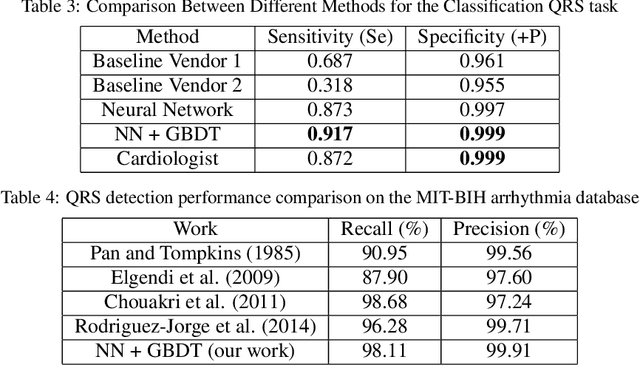
Abstract:Holter monitoring, a long-term ECG recording (24-hours and more), contains a large amount of valuable diagnostic information about the patient. Its interpretation becomes a difficult and time-consuming task for the doctor who analyzes them because every heartbeat needs to be classified, thus requiring highly accurate methods for automatic interpretation. In this paper, we present a three-stage process for analysing Holter recordings with robustness to noisy signal. First stage is a segmentation neural network (NN) with encoderdecoder architecture which detects positions of heartbeats. Second stage is a classification NN which will classify heartbeats as wide or narrow. Third stage in gradient boosting decision trees (GBDT) on top of NN features that incorporates patient-wise features and further increases performance of our approach. As a part of this work we acquired 5095 Holter recordings of patients annotated by an experienced cardiologist. A committee of three cardiologists served as a ground truth annotators for the 291 examples in the test set. We show that the proposed method outperforms the selected baselines, including two commercial-grade software packages and some methods previously published in the literature.
 Add to Chrome
Add to Chrome Add to Firefox
Add to Firefox Add to Edge
Add to Edge